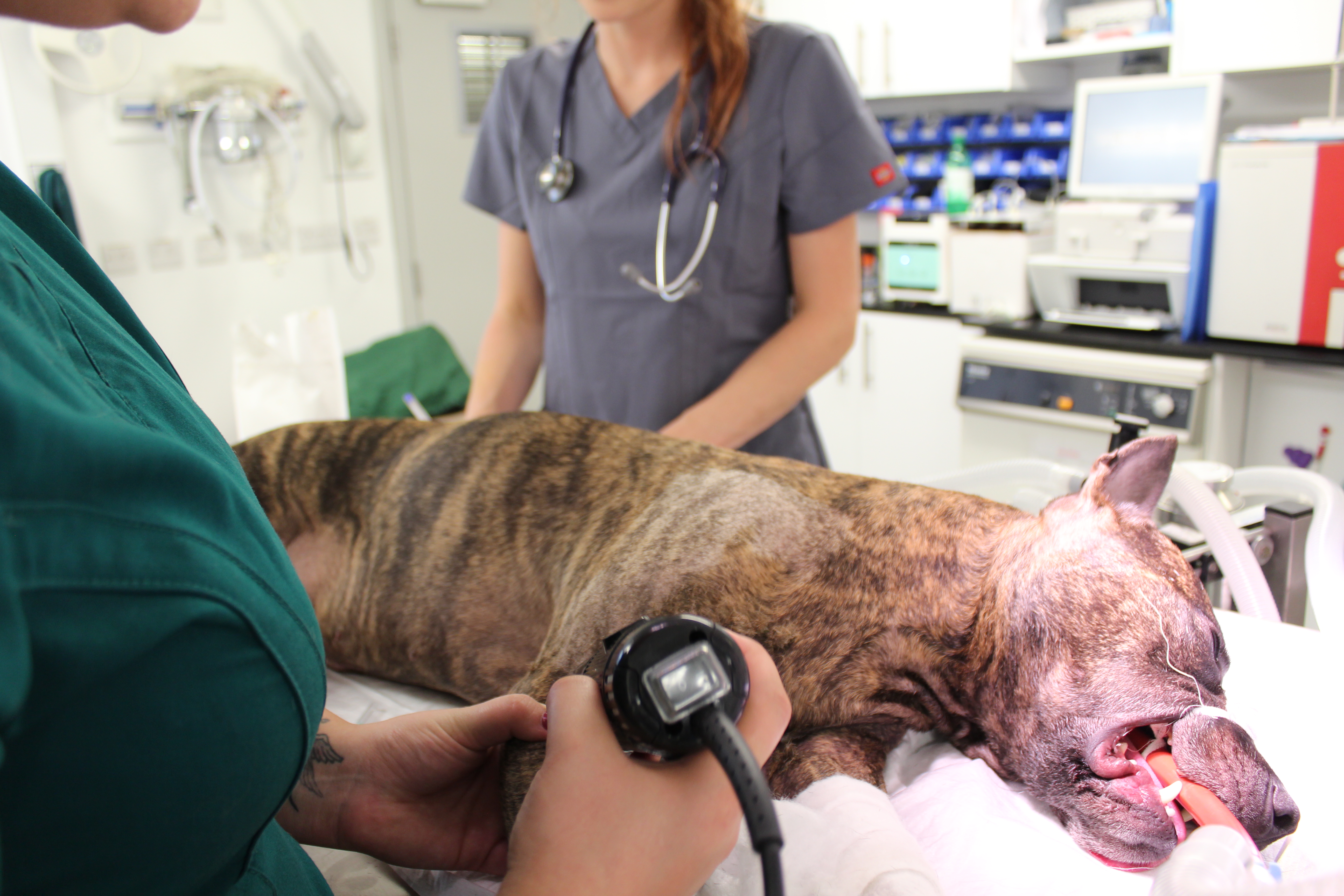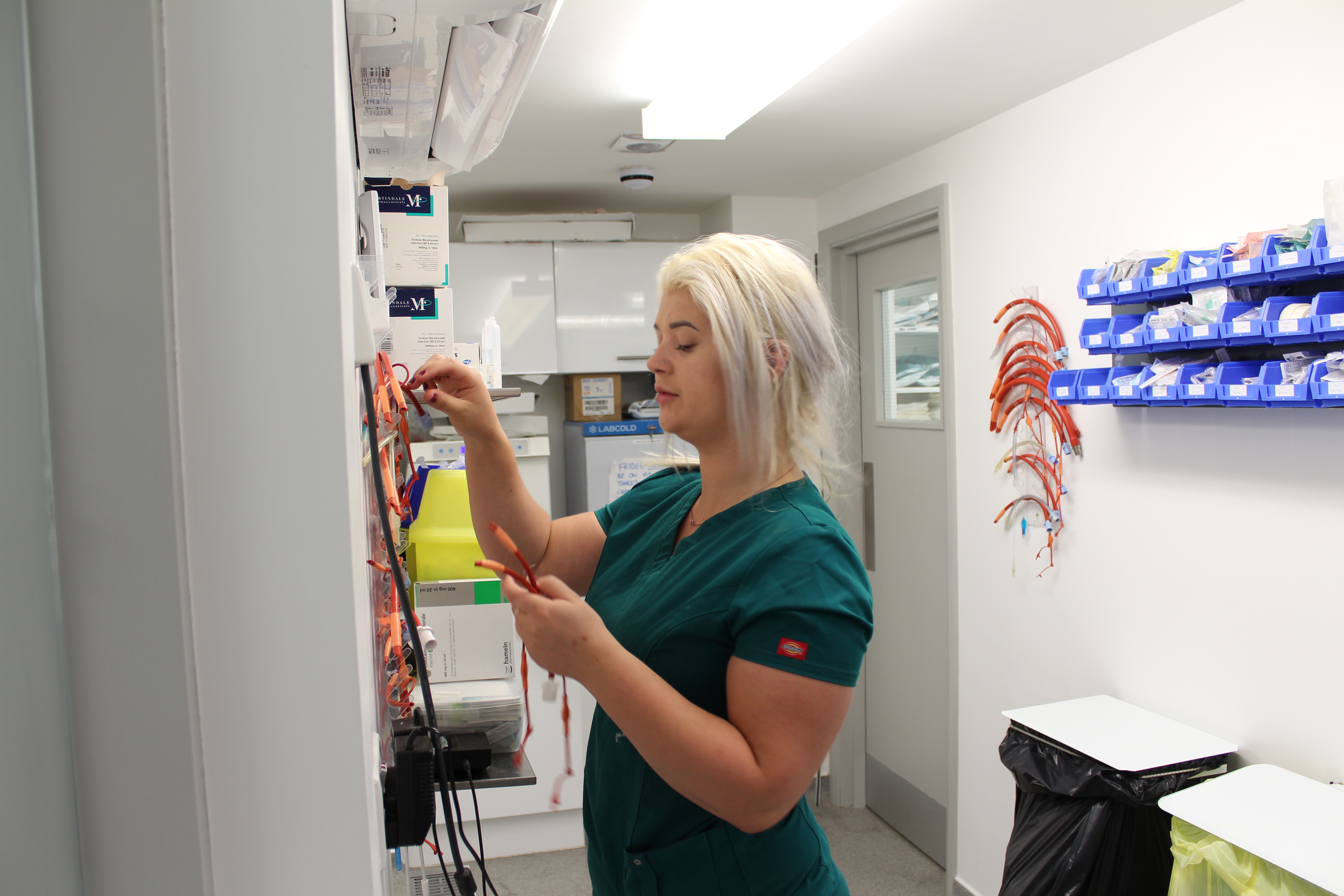Patella Luxation
What is Patellar luxation?
The patella (kneecap) is a small bone that helps the quadricep muscle attach onto the tibia (top of the shin). It glides within a groove on the femur. In some pets, the patella luxates (dislocates) out of this normal groove. This dislocation can happen intermittently or the patella can be permanently out of position. As the patella luxates it damages the cartridge which causes pain. And over time can cause arthritis and place abnormal stress on the cruciate ligament leading to rupture.
Pets develop this condition as they grow. It is usually seen in small dogs but any size of dog can be affected. It is possible, but less commonly noted in cats. Luxation of the patella due to injury (trauma) is uncommon.
The patella luxates because it is not aligned properly with the rest of the leg. So as the rest of leg moves the patella wants to go in a slightly different direction. The cause of the abnormal alignment involves varying degrees of deformity of the femur and tibia. In severe cases in dogs, the thigh bone (femur) is bowed at the end due to abnormal growth. These dogs often have either a bow-legged or knock-kneed appearance.
How can I tell if my pet has patellar luxation?
A characteristic “skipping” lameness is often seen, where animals will limp for a few steps and then return to normal. Some animals will limp continuously and some dogs affected by patellar luxation in both knees will have a stiff and crouched walk.
How is patella luxation diagnosed?
Usually your local vet can diagnose the condition from examination. You may have noticed a skipping lameness or we may find it without you noticing the lameness. This sometimes happens at the booster and clients realise there has been some previous skipping lameness.
Your local vet will recommend:
Blood tests to help assess general health before sedation for X-rays and to help guide best treatment plan.
X-rays to assess the types of deformity and the presence of arthritis. Certain views are taken to asses the shape of femur and tibia.
Orthopaedic exam: we will look for other conditions like hip dysplasia and cruciate disease and grade the patella luxation 1 to 4 - 4 being the worst.
Your local vet will discuss these results with you and may recommend surgery. Or a member of the specialist surgical team can discuss the options with you.
How Is Patella Luxation Treated?
Many dogs with patella luxation benefit from surgery. In some cases non surgical treatment is possible. This would involve exercise modification, weight loss and hydrotherapy. The success of this would be carefully monitored.
Usually clients opt for surgery as it is very successful, giving a more permanent outcome. The type of operation depends on the results of the X-rays and inspection at surgery. The type of surgeries are:
1) Tibial tuberosity transposition.
A small piece of the top of the shin is re-positioned to correctly align the patella. The patella is attached to the top of shin via the straight patella tendon so by making a small cut into this part of the shin and re-positioning it we can straighten the patella. This is held in place with one or two small pins. This is the most common type of surgery performed.
2) Trochlea groove deepening (recession sulcoplasty)
In some cases the groove (trochlea) at the end of the femur is shallow. This can be deepened by removing a wedge of bone and cartilage from the groove, deepening the base, and replacing the block or wedge. This technique will make the groove deeper and preserve the surface (cartilage) of the groove.
3) Femoral osteotomy
Some dogs have a severe bow in the femur and they may respond better to having this straightened out. This is usually achieved by removing a small wedge of bone from the femur and straightening it with plates and screws. If this surgery is needed a tibial tuberosity transposition may not be required but a deepening surgery may be needed.
4) Soft tissue reconstruction
The tissues around the patella may be too loose or too tight so they may require loosening or tightening. This surgery alone is not strong enough to support the patella for life but aids in restoring a balanced tracking system.
What Is The Aftercare And Prognosis Following Surgery?
Your pet will be hospitalised for a few days after surgery. This will help provide pain relief and help restore mobility. Our nursing team will provide plenty of TLC and start the rehab process.
Once home pets need to rest for 6 weeks usually in a crate with limited lead walks. The stitches are removed after 10 days and the exercise and pain relief are reviewed every two weeks by your local vet. The support of the surgical team is in easy reach but usually pets make a smooth recovery.
After 6 weeks we will take some X-rays to make sure the bone has healed completely. If so your pet can quickly return to normal exercise.
The prognosis with patellar luxation surgery is good. Pets can develop arthritis to some degree, this is often is very mild without signs. Stiffness, especially after rest, can be seen but the skipping lameness should be resolved.

